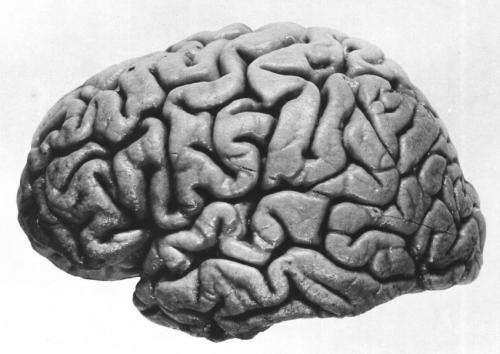How various brain areas interact in decisions

Our decisions can be pictured in the brain. Scientists at the University of Zurich were able to show in a recent study which areas are most active in decision making. Often the so-called prefrontal cortex not only apparently shows increased activity during decisions that require self-control, but in general during decision making. The results could be of use in promoting decision skills in difficult decisions.
The value of a piece of chocolate cake can change. Someone who happens to be on a diet is more likely to choose a fruit dessert and judge the calorie-laden cake as unhealthy. Previous studies have shown that a specific network in the brain is active when a person must decide between various choices that vary depending on context. They emphasize the interaction between neurons in two brain areas of the prefrontal cortex – the controlling area on the front side of the brain.
Prefrontal cortex shows increased activity in all decisions
Sarah Rudorf and Todd Hare of the Department of Economics of the University of Zurich were able to show those areas of the brain that are most active in the process of decision making in their new study. Their results indicate that the neuronal interactions between the so-called dorsolateral and ventromedial prefrontal cortex not only play a central role when a person needs to decide between several options, but also are decisive in general for flexible decision making. This contradicts the belief that increased activity in the prefrontal cortex only occurs when self-control is required when deciding between conflicting preferences.
Previously, situations in experiments were only examined where people had to reconcile contradictory wishes in order to achieve an objective. For example, subjects had to measure financial profits against fairness interests or immediate returns against long-term payments. Sarah Rudorf and Todd Hare wondered what happens in the brain if there are no contradictory wishes and no self-control is needed.
In their study, the scientists used functional magnetic resonance imaging to examine the brains of 28 subjects while they answered choice questions. The participants could opt for actions that were always associated with financial profit. However, the rules that defined when an action led to the largest payoff changed several times during the course of the study.
Points of interaction for new therapies
"Decisions that require self-control are extremely important, as they directly affect a person's bodily, social, or financial welfare," explains Sarah Rudorf. The determination of the mechanisms in the brain that are not only involved in decisions requiring self-control but that are also used in general decisions could open new points of interaction for therapies. "We could develop training programs that support certain decision skills in difficult situations that depend on self-control," concludes Todd Hare.
More information: "Interactions between Dorsolateral and Ventromedial Prefrontal Cortex Underlie Context-Dependent Stimulus Valuation in Goal-Directed Choice." Journal of Neuroscience, November 26, 2014, 34(48):15988 –15996.

















